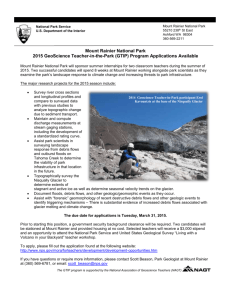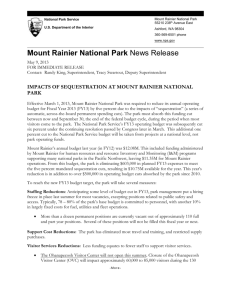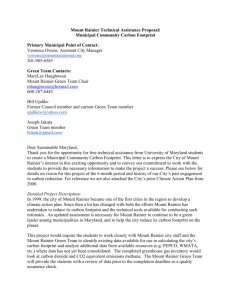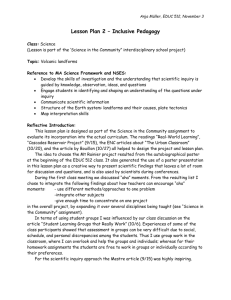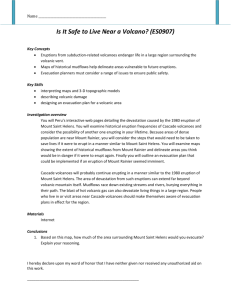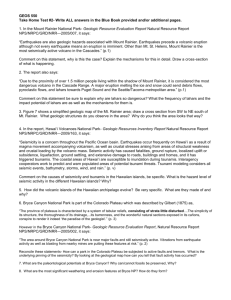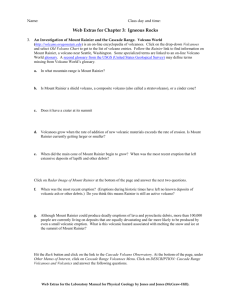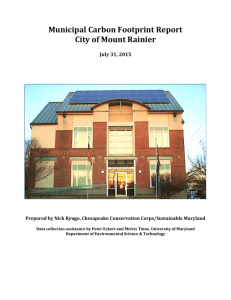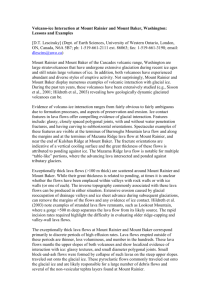Mount Rainier Disaster Preparation Debate
advertisement
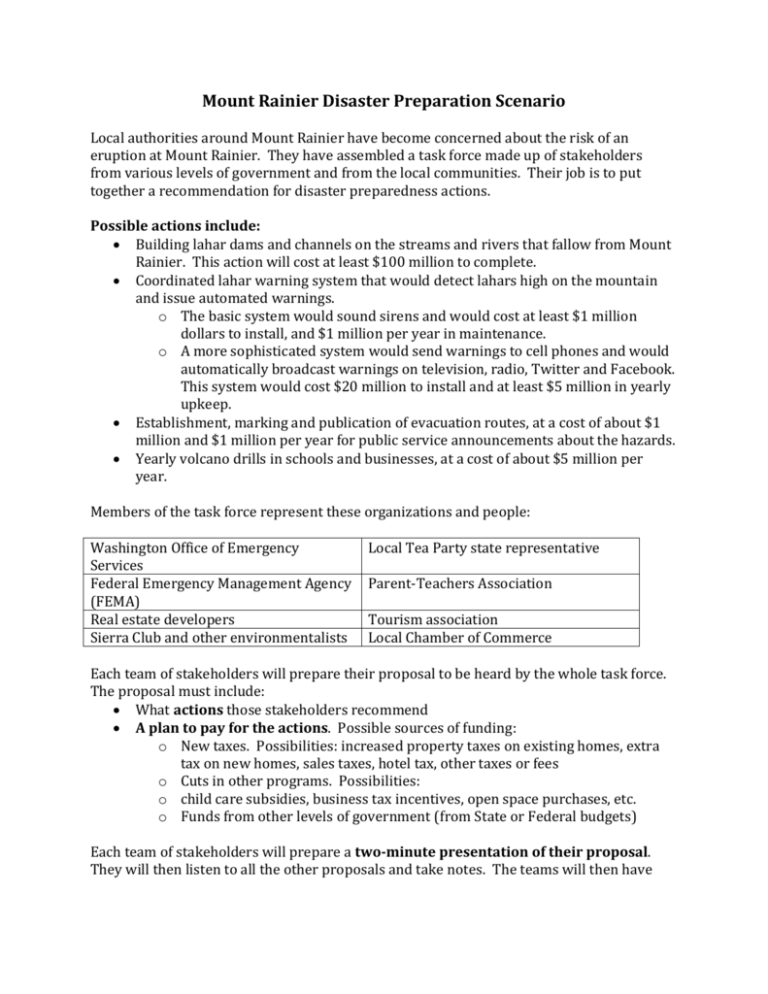
Mount Rainier Disaster Preparation Scenario Local authorities around Mount Rainier have become concerned about the risk of an eruption at Mount Rainier. They have assembled a task force made up of stakeholders from various levels of government and from the local communities. Their job is to put together a recommendation for disaster preparedness actions. Possible actions include: Building lahar dams and channels on the streams and rivers that fallow from Mount Rainier. This action will cost at least $100 million to complete. Coordinated lahar warning system that would detect lahars high on the mountain and issue automated warnings. o The basic system would sound sirens and would cost at least $1 million dollars to install, and $1 million per year in maintenance. o A more sophisticated system would send warnings to cell phones and would automatically broadcast warnings on television, radio, Twitter and Facebook. This system would cost $20 million to install and at least $5 million in yearly upkeep. Establishment, marking and publication of evacuation routes, at a cost of about $1 million and $1 million per year for public service announcements about the hazards. Yearly volcano drills in schools and businesses, at a cost of about $5 million per year. Members of the task force represent these organizations and people: Washington Office of Emergency Services Federal Emergency Management Agency (FEMA) Real estate developers Sierra Club and other environmentalists Local Tea Party state representative Parent-Teachers Association Tourism association Local Chamber of Commerce Each team of stakeholders will prepare their proposal to be heard by the whole task force. The proposal must include: What actions those stakeholders recommend A plan to pay for the actions. Possible sources of funding: o New taxes. Possibilities: increased property taxes on existing homes, extra tax on new homes, sales taxes, hotel tax, other taxes or fees o Cuts in other programs. Possibilities: o child care subsidies, business tax incentives, open space purchases, etc. o Funds from other levels of government (from State or Federal budgets) Each team of stakeholders will prepare a two-minute presentation of their proposal. They will then listen to all the other proposals and take notes. The teams will then have five minutes to prepare a one-minute rebuttal that shows why the other proposals are bad ideas.
